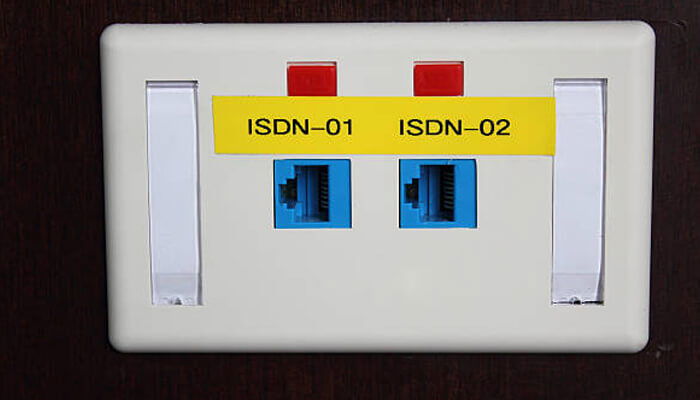ISDN (Integrated Services Digital Network) is a digital phone network technology that was developed to provide digital communication services over traditional copper telephone lines. It offers several key differences from other digital phone networks, such as analog phone lines and VoIP (Voice over Internet Protocol). Here are some of the primary differences and an overview of how ISDN operates:
1. Analog vs. digital
ISDN is a fully digital communication technology, which means it transmits data in a digital format. In contrast, traditional analog phone networks use analog signals for voice communication.
2. Equipment
ISDN requires specialized ISDN terminal adapters or ISDN-capable routers and modems to connect to the network.
Other digital phone networks typically use standard modems or network interface devices for connectivity.
3. Connection setup
When a call is initiated, the ISDN terminal equipment sends a request to the network to establish a connection.
4. Data transmission
B channels are used for actual data transmission. ISDN can provide multiple B channels, and each channel can carry data at a rate of 64 Kbps (for Basic Rate ISDN, or BRI) or 128 Kbps (for Primary Rate ISDN, or PRI).
5. Channelization
ISDN divides its digital connection into multiple channels, typically consisting of two 64 Kbps B (Bearer) channels and one 16 Kbps D (Data) channel. B channels are used for voice or data, while the D channel is used for signaling and control information.
ISDN allows for the simultaneous use of B channels for both voice and data. For instance, one B channel can be used for voice communication, while the other can carry data.
6. Digital clarity
ISDN offers clear and consistent voice quality, as it transmits voice digitally, which reduces noise and distortion.
ISDN generally offers better call quality and reliability compared to analog phone lines due to its digital nature. The quality of analog lines can degrade over long distances or due to line noise.
7. Speed
ISDN provides higher data transfer rates than analog lines, which can be important for data-intensive applications. ISDN B channels can be used for data transmission at 64 Kbps each.
8. Call termination
Once the call is complete, the ISDN network releases the connection, and the D and B channels are freed up for other calls or data transfer.
9. Multiplexing
ISDN can transmit both voice and data simultaneously over the same line, thanks to a technique called multiplexing. This means you can make phone calls and access the internet or send data over the same connection, making it more versatile.
10. Compatibility
ISDN requires specialized ISDN-compatible equipment and devices, which may not be as readily available as analog phone equipment. VoIP, on the other hand, relies on internet connectivity and can work with a broader range of devices.
11. Cost
ISDN services can be more expensive than analog lines and may require additional equipment. VoIP, in contrast, often offers cost savings as it uses existing internet connections and doesn’t require a separate phone line.
12. Summary
It’s worth noting that ISDN has been largely replaced by more modern technologies like broadband internet, VoIP, and mobile networks. These technologies offer higher data transfer speeds and more flexible communication options, making ISDN less common in today’s telecommunications landscape.
How ISDN operates
ISDN operates using a digital signal over traditional telephone lines. It involves the following key elements:
1. Terminal equipment
Devices like ISDN telephones, fax machines, or routers are connected to the ISDN line.
2. ISDN line
This is the physical connection between your premises and the telephone company’s central office. It typically consists of two B channels (for voice or data) and one D channel (for signaling and control).
3. Central office
The telephone company’s central office is responsible for connecting your ISDN line to the wider telephone network.
4. Signaling and control
The D channel is used for signaling and control purposes. It establishes and manages the call, ensuring that both parties can communicate effectively.
5. Data and voice transmission
The B channels are used for data and voice transmission. They carry your phone calls or data at 64 kbps each, providing a reliable and clear connection.





